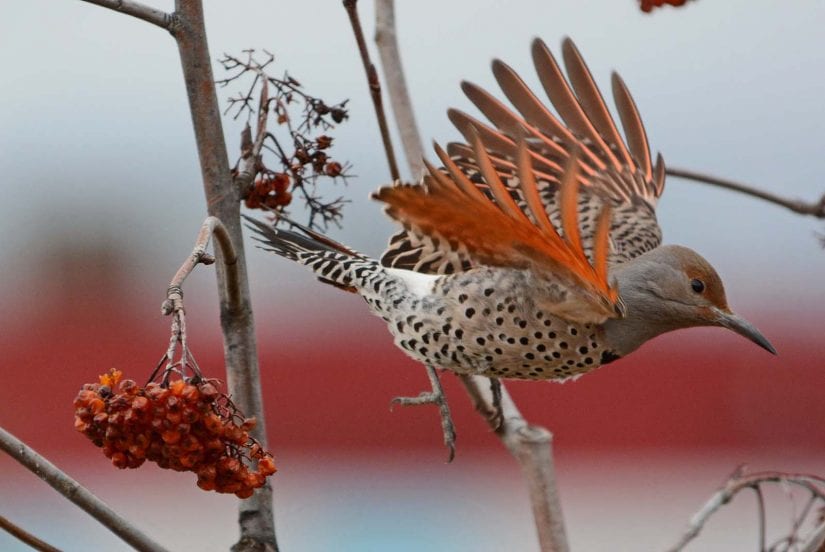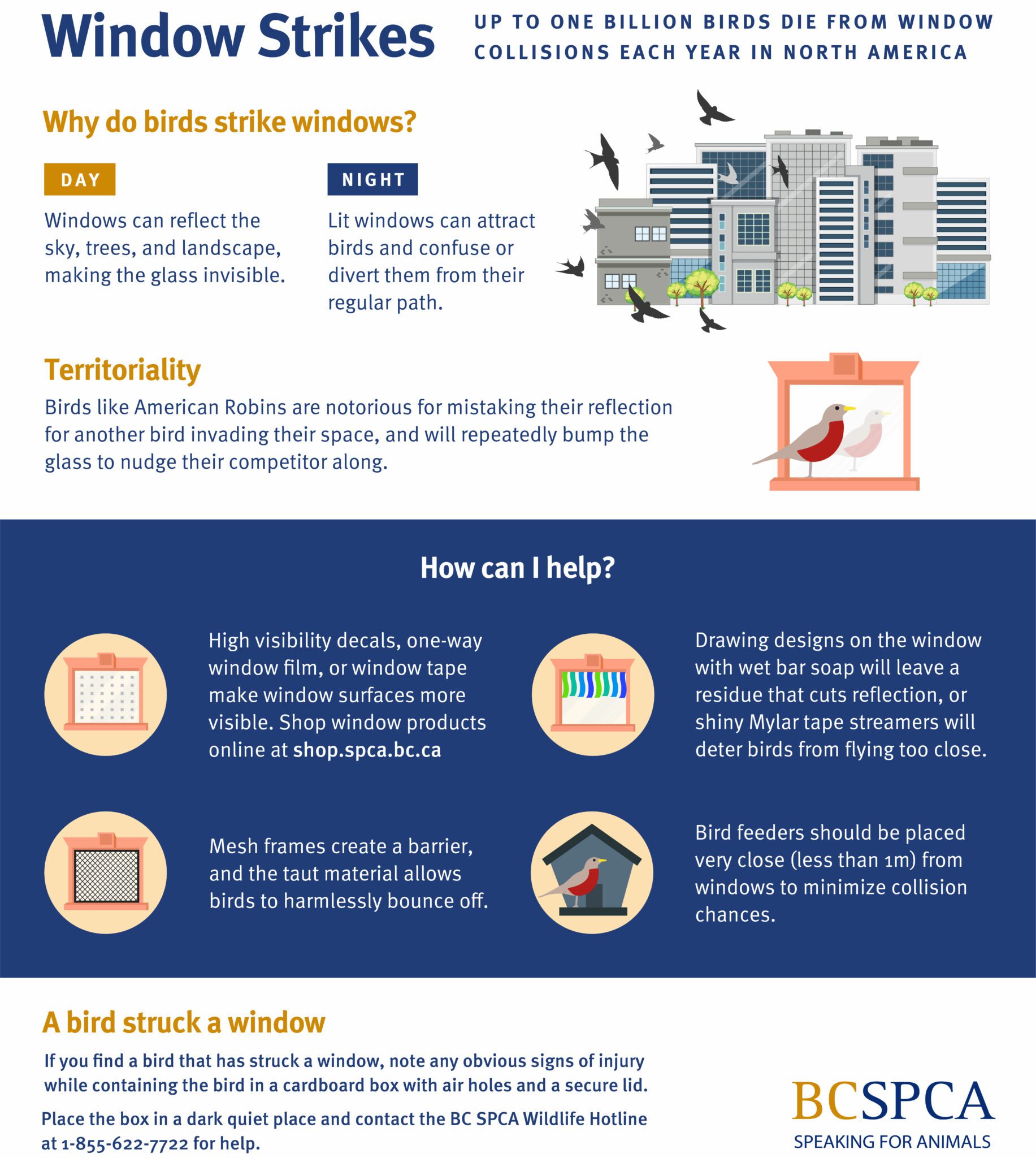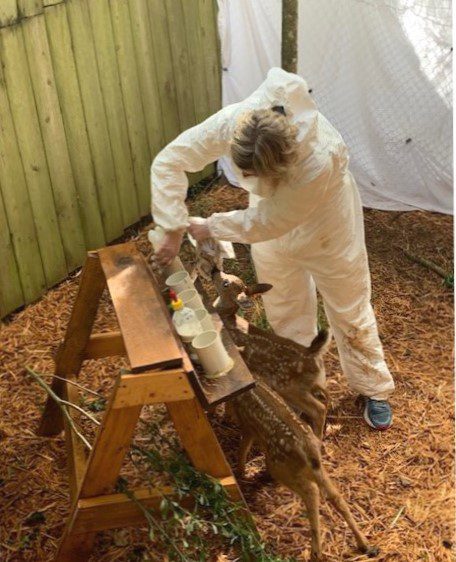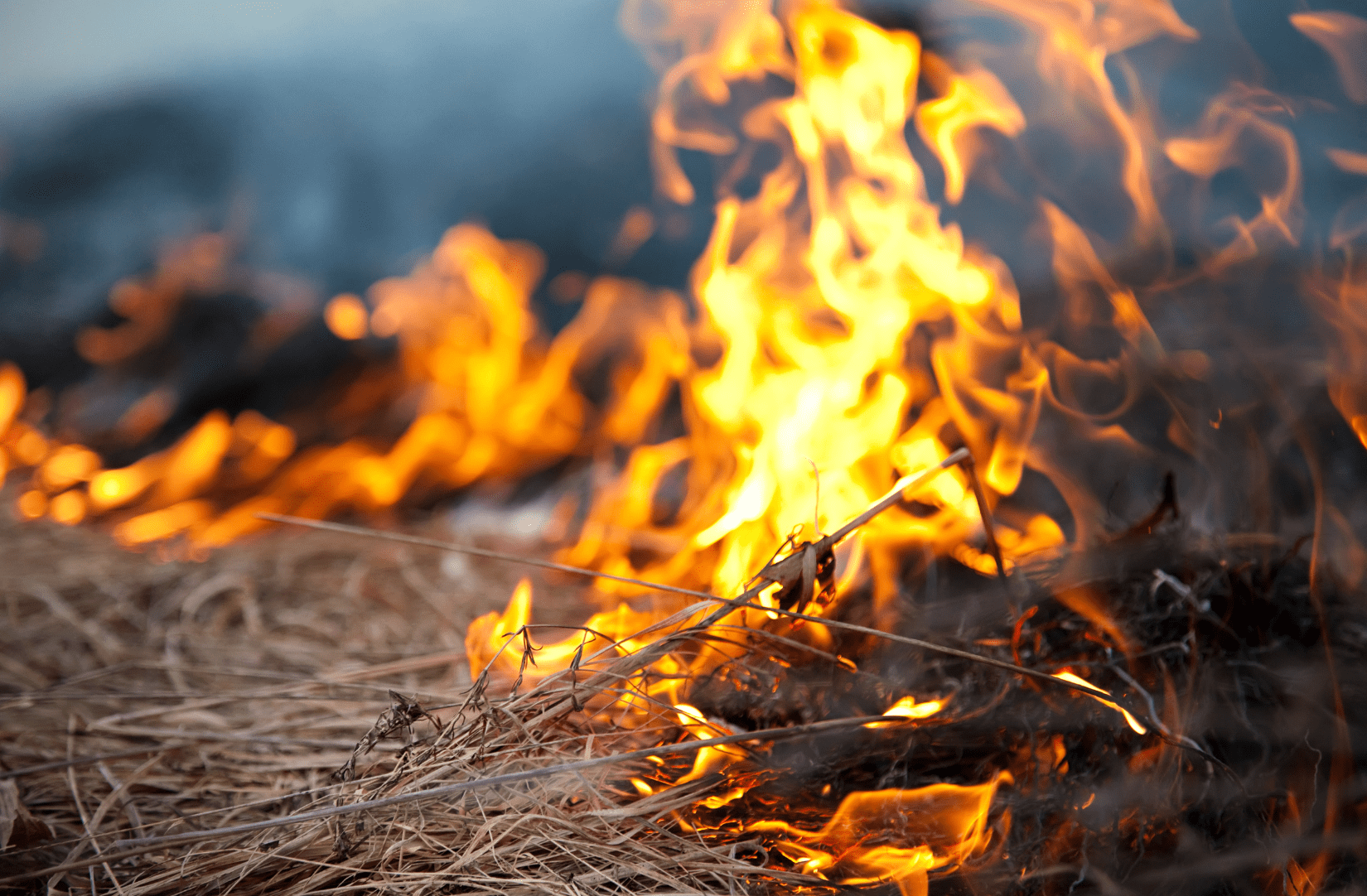How to help wild animals
If you find a bird that has struck a window, take note of any obvious signs of injury. Place the bird in a cardboard box with air holes and a secure lid. Make sure the box is just large enough for the bird to extend their wings (not too big, not too small).
Put the closed box in a safe, quiet and dark place. Contact your local wildlife rehabilitation centre or call the BC SPCA Animal Helpline at 1-855-622-7722 for advice. Do not give the bird food or water.
Even if they become more active, do not let the bird go once you have contained them. Birds often have internal injuries after hitting a window, and will need help.
Learn more about how to prevent bird-window collisions, and buy decals and tape for your windows to help birds.
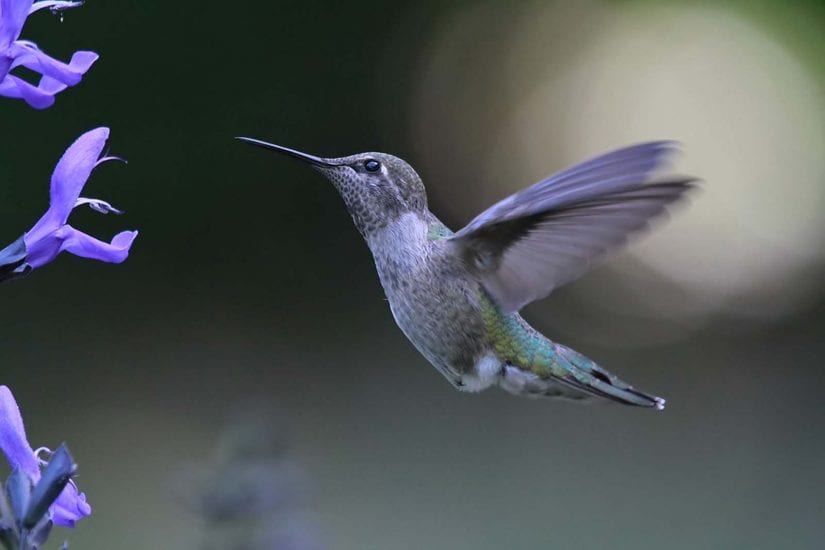
If you have found an injured deer fawn or believe a fawn may be orphaned, call our Animal Helpline at 1-855-622-7722 or the Conservation Officer Service at 1-877-952-7277 (RAPP). They will help you assess the animal and find a wildlife rehabilitator.
Unfortunately, wildlife rehabilitators can’t often help injured adult deer, as they are too high-stress to keep in a captive setting. Even when injured, they can be very dangerous because of their size and strength. If you can approach an injured adult deer and they don’t run away, they are likely too badly injured to survive.
Call your local RCMP or Conservation Officer Service to humanely euthanize an injured adult deer.
Read more about rescuing wild animals.

Yes, some school programs will give you credit for volunteering with the BC SPCA.
Practicums at Wild ARC are available for university and professional training credits.
Practicums at the Vancouver Branch are also available to university students if registered through the University of British Columbia.
High-school work experience may also be available at your local BC SPCA branch. Contact them directly for details.
Veterinary and registered animal health technologist externships may also be available at certain BC SPCA Hospitals and Clinics. Contact them directly for details.
After ducklings and goslings hatch, their parents walk the babies (who can’t fly yet) to nearby water sources. Sometimes the families get stuck at road medians if they try to cross a highway or busy street. This creates a tricky situation where both the animals and the rescuers might be in danger. Trying to herd the family can cause them to panic and run into traffic, and rescuers may disrupt traffic or risk their own safety.
The best way to help duck or geese families trying to cross the street is to contact local police for help stopping traffic. Once traffic is stopped, slowly and calmly herd the babies and parents to safety. Only try to capture the family if necessary for their safety. If the parents (or babies) panic and scatter, the rescue and reunion can become complicated.
Call our Animal Helpline at 1-855-622-7722 for help with wildlife issues, including advice on how best to help duck or goose families.
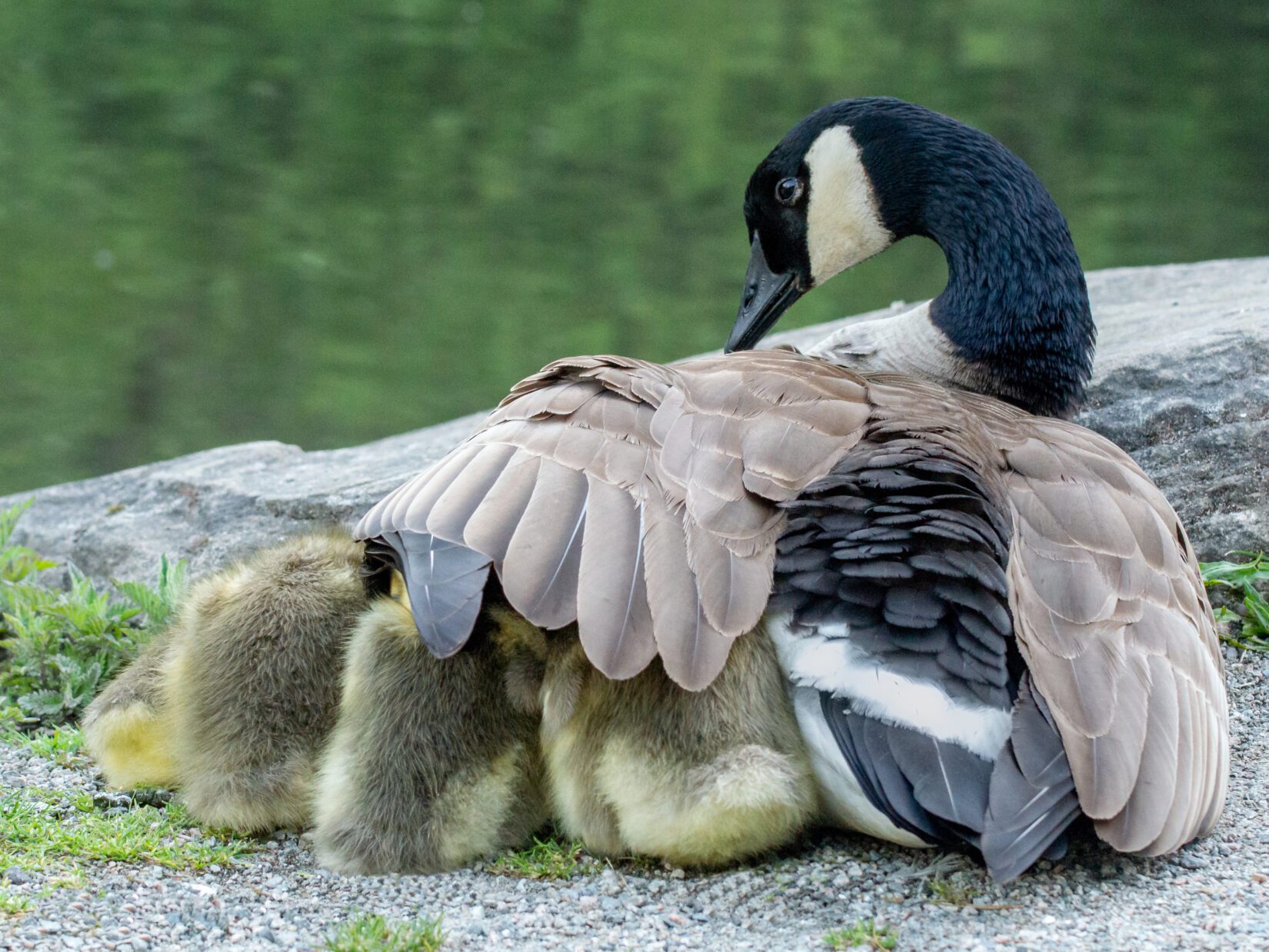
Baby ducks and geese can usually make their own way down from a nest on a roof. But, they may need your help if:
- The building is more than six meters (two storeys) in height
- There is a barrier higher than 13 cm preventing them from hopping down
- The ground below is concrete, cement or other hard material
In any of the above cases, call the BC SPCA Animal Helpline at 1-855-622-7722 to help you develop a rescue plan.
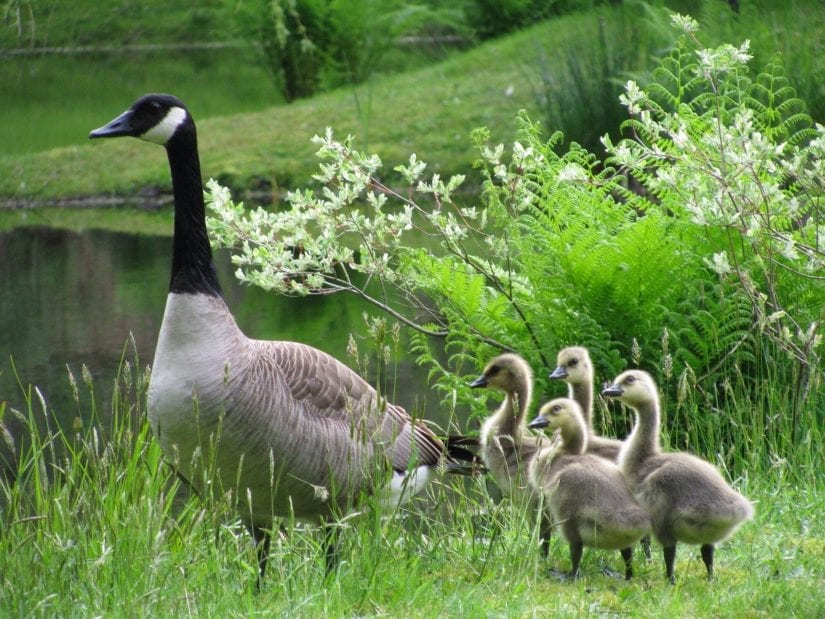
What do wildfires mean for wildlife? Just like people, wildfires also impact wildlife. Wild animals have developed strategies to fly, run or bury themselves to escape from fires, but the change in habitat and food resources will have a lasting impact for generations. Especially for fires that occur near urban and suburban areas, you may see wild animals passing through or resting in your yard as they search for safety.
During wildfire season, or in times of severe drought, you can help wild animals:
- Prevent forest fires – learn more about how you can prevent forest fires.
- Don’t feed the animals – feeding wildlife does more harm than good, and can create dependence on humans. Wild animals can find food on their own, even in severe conditions.
- Let them rest – if wild animals are fleeing a fire, they will already be scared and tired. Don’t scare them, and be patient as they rest before moving along.
- Keep your pets on-leash or inside – this helps keep pets and wildlife safe by preventing conflicts.
- Report injured wildlife – if you find an injured animal or suspect they need help, contact your local wildlife rehabilitation centre or call the BC SPCA Animal Helpline at 1-855-622-7722 for advice.
If you do find a wild animal in trouble as a result of a fire, they need help as soon as possible. Before trying to rescue them, make sure they need your help. Trying to catch a wild animal that’s just resting will scare them, wasting precious energy that may be needed to escape a spreading fire.
A wild animal might need help if:
- There are obvious signs of injury (burns, blood, wounds, etc.)
- They have been hit by a car, hit a window, or been caught by a pet
- They seem ‘sleepy’ or don’t respond when you approach
- They seem dizzy or disoriented, or stumble and fall when they move
- They are a baby and have been crying for a long time, are covered in bugs, or are cold and not moving very much
If you’re not sure whether a wild animal needs help, call your nearest wildlife rehabilitation centre, or the BC SPCA Animal Helpline at 1-855-622-7722, for advice.
Learn more about how you can help pets and other animals during wildfire evacuations.
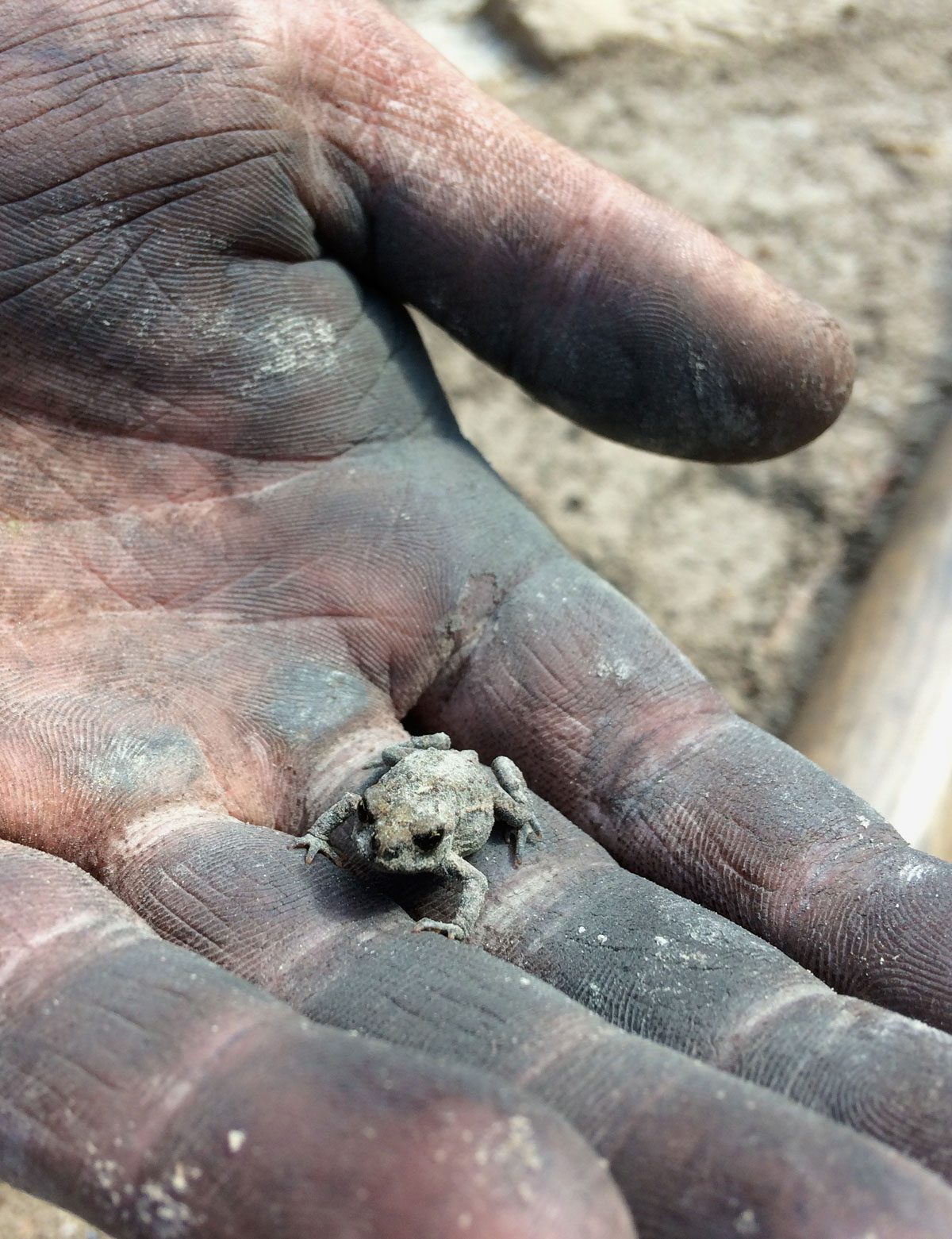
Cats have bacteria in their mouths that can kill a bird if it is not treated with specialized antibiotics. Even if the bird doesn’t look injured, a small scratch or puncture can kill them. Do not try to treat the bird yourself. Gently contain the bird in a well-ventilated box and bring them to your nearest wildlife rehabilitation centre in British Columbia.
Still need help? Read more about rescuing wild animals or call the BC SPCA Animal Helpline at 1-855-622-7722 for advice.
Read more about preventing problems between cats and birds, or about pets and wildlife (PDF).
